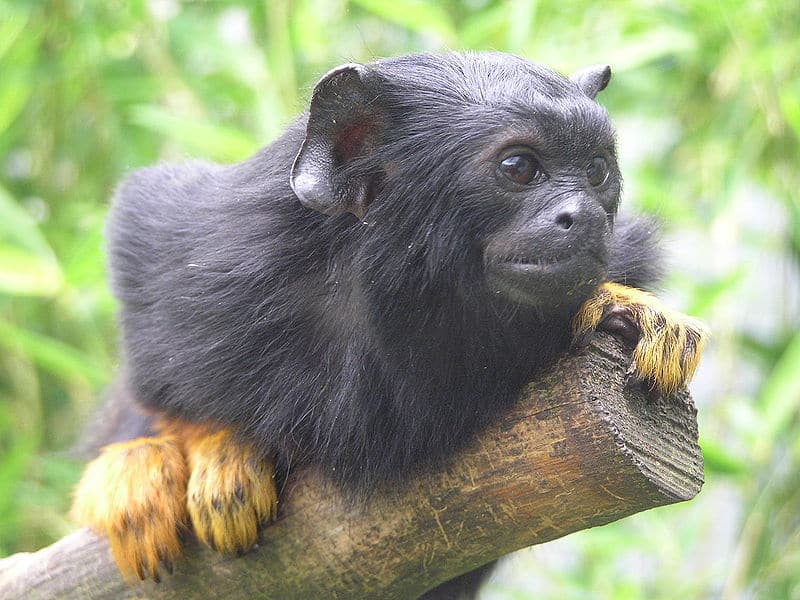
Golden-Handed Tamarin Facts
- First of all, the stunning Golden-Handed Tamarin, also known as the Midas Tamarin, remains a truly astonishing species. Of further interest to many, this spellbinding creature also classifies as a variety of New World Monkey. Presently, only five recognized families fall into this highly distinctive category.
- Quite fortunately, its population numbers appear to be sufficient and stable, at least for the moment. This truly pleasant surprise occurs despite its having only a moderate and restricted habitat range. Due to these factors, the IUCN understandably classifies the amazing mammal as a Species of Least Concern.
- Rather interestingly, the remarkable primate also appears to be expanding its territorial range. Unfortunately, however, that new range overlaps into that of another variety of tamarin. Evidence indicates that the Golden-Handed Tamarin is slowly displacing the other species.
Related Articles
Roloway Monkey
Golden-Handed Tamarin Physical Description
The Golden-Handed Tamarin stands out as a rather fascinating creature. But nevertheless, it still remains a physically diminutive primate. That holds true because mature adults only reach an average body length of about 8 – 11 in (20 – 28 cm).
Further, the fairly remarkable tail of the creature adds another 12 – 17 in (31 – 44 cm) to the overall length of the animal. In addition, it also remains a lightweight species, rarely exceeding a weight of 1.2 lb (0.54 kg).
Its dark face also develops virtually hairless, while its large ears protrude from the fur. In addition, the short fur of the mammal displays primarily black or dark brown. The face appears quite dark, and entirely hairless.
However, the feet and hands of the animal remain its most memorable and distinctive physical feature. These usually display a surprising reddish-orange to gold color. This, therefore, serves as the source of the alternate common name of Midas Tamarin.
- Kingdom: Animalia
- Phylum: Chordata
- Class: Mammalia
- Order: Primates
- Family: Callitrichidae
- Genus: Saguinus
- Species: S. midas
Golden-Handed Tamarin Distribution, Habitat, and Ecology
First of all, the marvelous Golden-Handed Tamarin inhabits highly specific portions of only 5 countries in South America. This surprisingly limited geographical area includes portions Guyana, Brazil, Suriname, French Guiana, and Venezuela.
Yet even more specifically, within that range, the fascinating primate only inhabits wooded areas north of the Amazon River. The creature also spends virtually all of its time in the canopy of the area. Therein, it also apparently prefers trees with small crowns.
Most notably, however, it typically lives in small groups. These groups usually consist of no more than 4 to 15 individuals. Rather surprisingly, little competition exist within the group, even among breeding males.
But, its impressiveness does not stop there. This species also displays truly extreme durability. Individuals often leap to the group from heights of as much as 60 ft (18 m), managing to land without suffering injury.
Finally, the remarkable animal remains extremely territorial, males and females alike. It can be quite aggressive, and even dangerous, despite its small size. This holds true due to its sharp claws and canine teeth.
Species Sharing Its Range
Brazilian Wandering Spider
Check out our other articles on 6 Extremely Localized Invertebrates, Tiger Rattlesnake, San Diego Ragweed, Shark Bay, Socotra Bluet, Wallace’s Flying Frog, Flamingo Tongue Snail
